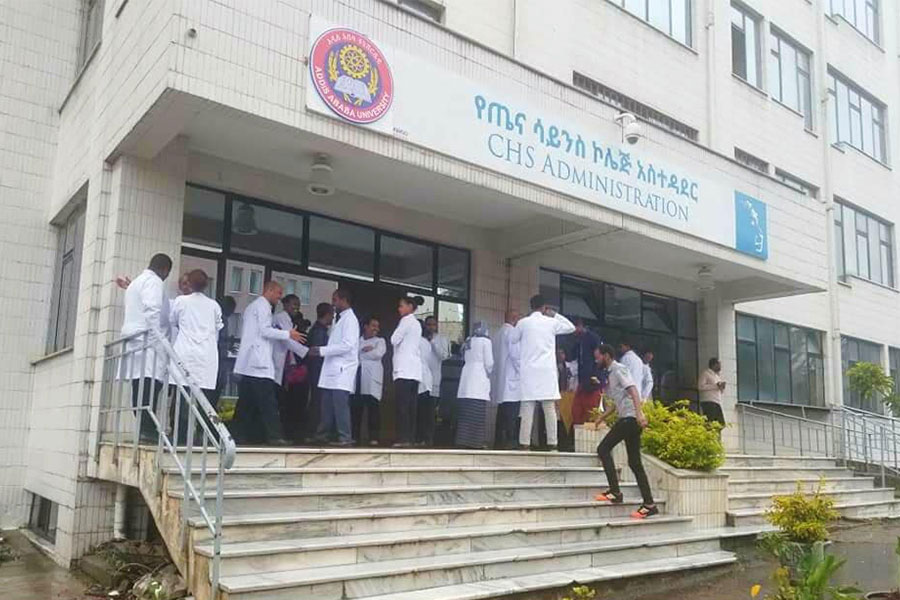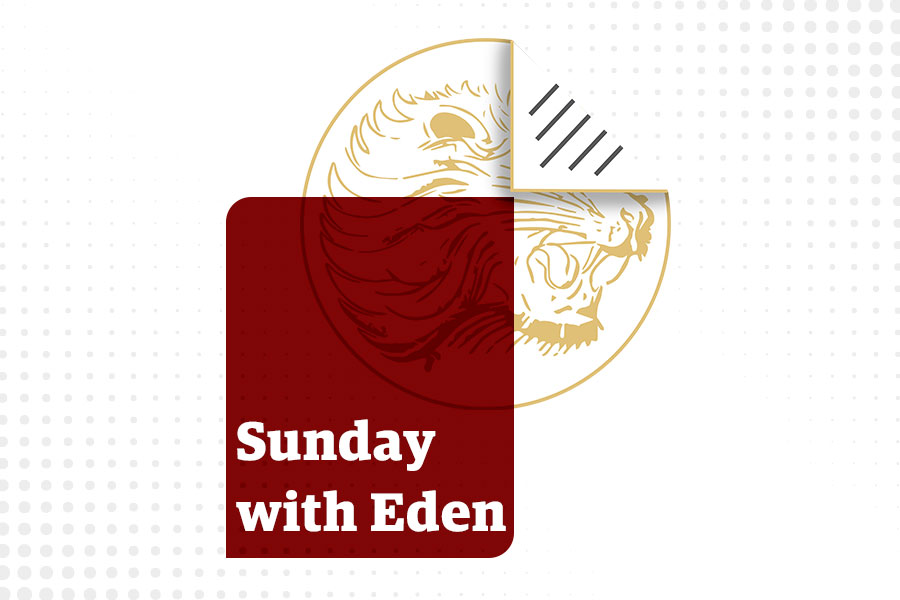
Fortune News | Aug 12,2023
I got a chance to explore the Science Museum on Menelik II Avenue during a medical exhibition hosted a while ago.
I was keen to discover what was inside as people flocked through the gates. Therefore, parked my car in the lot and followed the steep path that took me to the entrance gates of the three-storey exhibition hall.
Young, enthusiastic ushers greeted me at the door. It was not surprising to see that most attendees were young, as science tends to fascinate the imagination of the youth.
A life-size 3D image of a lady wearing a white coat with a statoscope around her neck was delivering a speech to a small group of people. It was the Ethiopian neurosurgeon Milena GebreEgziabher (MD) encouraging young girls to join the speciality that a handful of women are part of.
I drew close to the glass tube to realise that it was a hologram machine, which makes use of superimposing wavefronts to construct a three-dimensional image in space. The scene was reminiscent of SCI-FI movies with ghost-like characters making a real-time appearance.
The audience rather focused on the visual effect than the important message. Many asked how an image hovered in thin air like a mist ascending from morning dew. I had to suppress a chuckle when an innocent bystander approached me and asked if the lady was real and how she got inside a glass box sealed from all sides.
Moving along from the scene, exhibitors showcased their technologies, products, and presentations at designated stalls and desks.
My first stop was a booth where various traditional medicine practitioners displayed their bottles and jars. The vendor claimed to deliver effective cures and explained application methods. However, he fell short to disclose the ingredients while leaving the judgment of its efficacy to end-users.
I trust there are traditional researchers who devoted their careers to finding cures for health maladies. However, I am afraid their genuine efforts face a threat from impostors who are in it for quick gains. There should be a regulatory framework to standardise the practice.
Traditional medicine is extensive and widely accepted in Asian countries such as China and Korea.
The Chinese believe that an imbalance in the vital life force called Qi can lead to illness and disease. This imbalance is typically caused by changes in the complementary strengths of yin and yang that make up the Qi. Various treatments and practices, including acupuncture, massages, and moderate non-combat martial arts activities like Tai Chi, are based on this conceptual framework.
While visiting Hong Kong decades ago, I observed many senior citizens practising Tai Chi in Victoria Harbour with the city's skyscrapers in the background. I incorporated Tai Chi into gym workouts as a way to prevent muscle cramps, improve wellness and promote relaxation.
My experience with Eastern health wisdom extends beyond Tai Chi. As I am well in my 40s, my hair is thinning near my scalp. While shopping at a renowned supermarket, I came across a hair oil that promised to prevent hair loss and even restore growth.
As I do with all products in the supermarket, bookstores, and pharmacies, I scanned the bar code that explained the product and did a little research online. I recommend scanning barcodes and looking online to check product reviews and authenticity.
Lucky for me, the product had coverage on its own website and reviews from consumer watchdogs. It is widely marketed on major e-commerce outlets such as Alibaba and Amazon.
It turns out the product is derived from an ancient Indian practice used for over 3,000 years. It contains over 20 types of flowers and spices categorized as Ayurvedic- coined from the words "Ayur" meaning life and "Veda" meaning knowledge or science. This ancient knowledge is used to address contemporary health problems.
Further research revealed that the hair oil effectively reduced hair loss but did not significantly impact regrowing. Its herbal origin provided a comfortable feel. It was a testament to me that herbal products can be efficient if aided by good research and administered safely.
My next stop led me to the booth controlled by the Armauer Hansen Research Institute (AHRI). The display comprised state-of-the-art equipment that tested various samples forwarded by regulatory agencies.
Global medicine verification often uses a controlled group of animals with close genetic makeup to humans, like white mice, guinea pigs, and rats, for testing. Animal rights groups strongly oppose using them in scientific research where viruses or microorganisms are administered and their results are monitored.
The white mice in display in the caged in meshed boxes stirred some sensation as they were not easy to come by in Ethiopia. The presenter said they were reportedly imported from China and were believed to possess desirable traits for experiments.
It was also the first time I saw these unsuspecting rodents whose role was to assist in mankind’s never-ending quest for knowledge. Their sacrifice in the name of advancement in science will remain a debatable moral issue.
Although there were simulations of a full-fledged Operation Room, an Intensive Care Unit and a Kidney dialysis machine on display, some booths were not manned at all leaving me with no choice but to pass them by.
The Ethiopian Health Ministry's booth showcases an online platform for paperless patient admission and discharge, addressing the overburdening of state and private health facilities with outdated, manual processes. The system addresses the need for improved facilities, technology, materials, qualified professionals, and proper filing systems, reducing the burden on patients and health facilities.
I stopped at a booth showcasing books and white powder packages. A young man from Ethiopian Health & Nutrition Research Institute explained alternative food formula supplements to combat stunted growth in infants and children.
The products backed by years of research documented in the volumes of materials are crucial for communities with limited access to balanced diets and nutrients, especially in rural and underprivileged areas. They address the rising food prices and struggling economies, while the display evokes hope and reminds us of the challenges ahead.
As I reached almost the end of my visit to the science museum, a gigantic Boeing 777 Aircraft engine, called the GE 90 caught my attention. Most intriguing was the GE 90 engine, a Boeing 777 aircraft engine, that weighs over 8,000Kg, four meters in height and eight meters in length.
It powers the 300-seat aircraft with a force of 90,000 pounds, equivalent to 41,000Kg and rotor blades spinning at 2000-9000 RPM. Visitors often take selfies with the machine, and I could not resist taking some myself.
Upon finishing the science museum tour, I reached the rooftop, offering a stunning view of the surrounding area, including Sheraton Addis, the Hilton Addis hotels, and the Unity Park inside the Menilik II Grand Palace. The rooftop also featured a beautiful garden, perfect for photo-taking. A dome-shaped building, resembling a space research textbook, was prominently visible, although it was not open to the public.
My experience at the Medical Exhibition was educational and eye-opening, and it made me appreciate the incredible advancements in the field of medicine. I can not wait to witness what the future holds for healthcare and the potential for more groundbreaking discoveries and treatments.
PUBLISHED ON
Jul 22,2023 [ VOL
24 , NO
1212]


Fortune News | Aug 12,2023

Fortune News | Sep 30,2023

Sunday with Eden | Sep 01,2024

View From Arada | Nov 29,2020

Commentaries | Jul 22,2023

Commentaries | May 28,2022

Commentaries | May 25,2024

Viewpoints | Jun 22,2024

Sunday with Eden | Feb 11,2023

Viewpoints | Oct 26,2019

Dec 22 , 2024 . By TIZITA SHEWAFERAW
Charged with transforming colossal state-owned enterprises into modern and competitiv...

Aug 18 , 2024 . By AKSAH ITALO
Although predictable Yonas Zerihun's job in the ride-hailing service is not immune to...

Jul 28 , 2024 . By TIZITA SHEWAFERAW
Unhabitual, perhaps too many, Samuel Gebreyohannes, 38, used to occasionally enjoy a couple of beers at breakfast. However, he recently swit...

Jul 13 , 2024 . By AKSAH ITALO
Investors who rely on tractors, trucks, and field vehicles for commuting, transporting commodities, and f...

Oct 4 , 2025
Eyob Tekalegn (PhD) had been in the Governor's chair for only weeks when, on Septembe...

Sep 27 , 2025
Four years into an experiment with “shock therapy” in education, the national moo...

Sep 20 , 2025
Getachew Reda's return to the national stage was always going to stir attention. Once...

Sep 13 , 2025
At its launch in Nairobi two years ago, the Africa Climate Summit was billed as the f...